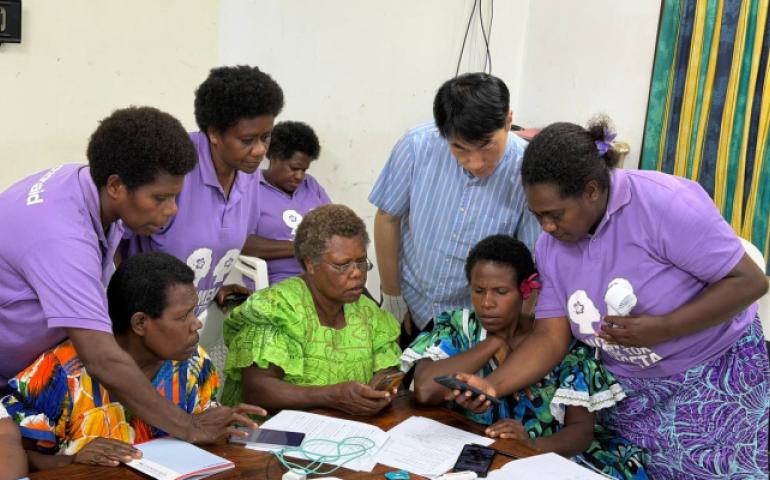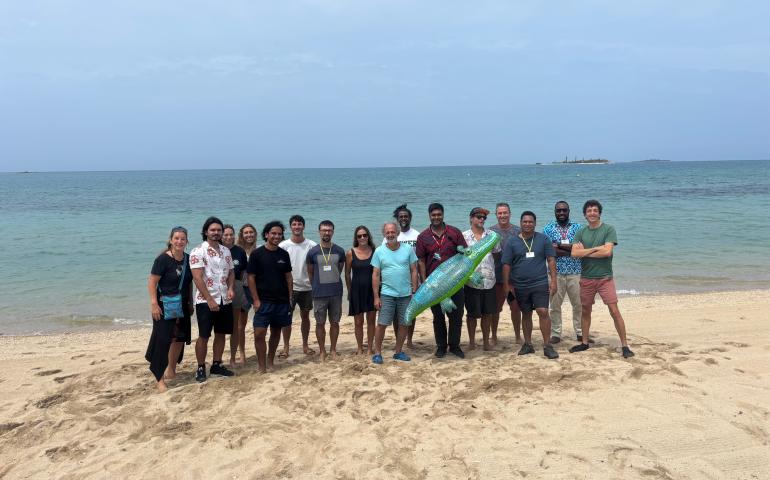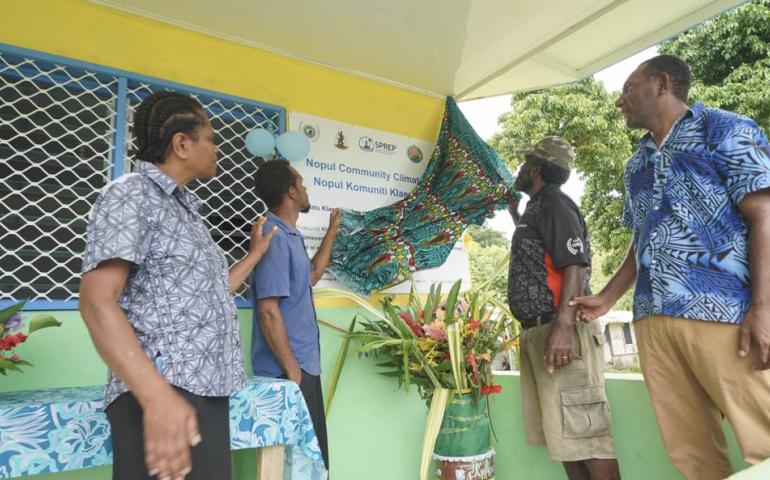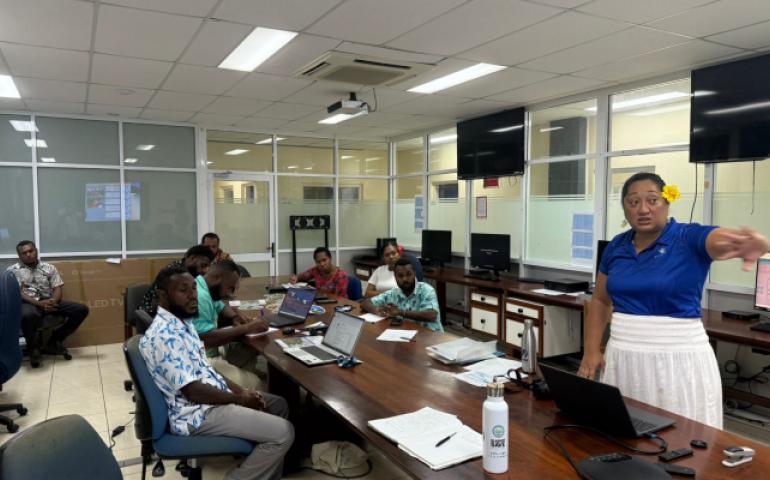First Pacific Island Climate Outlook Forum (PICOF-1)
The 1st Pacific Island Climate Outlook Forum (PICOF-1) was hosted by University of the South Pacific at the Laucala Campus in Suva, Fiji Islands from 12-16 October, 2015. The forum brought together national, regional and international experts from the Water Resources, Meteorological and Climate Services sectors.
The aim of a Pacific Islands Climate Outlook Forum is to provide a platform to consolidate seasonal forecasts from multiple sources by issuing a consensus regional outlook statement. This process allows its participants to better understand the science behind seasonal forecasts and to better appreciate the related uncertainties that are relevant for the measures applied to adapting and reducing risks to climate variations.
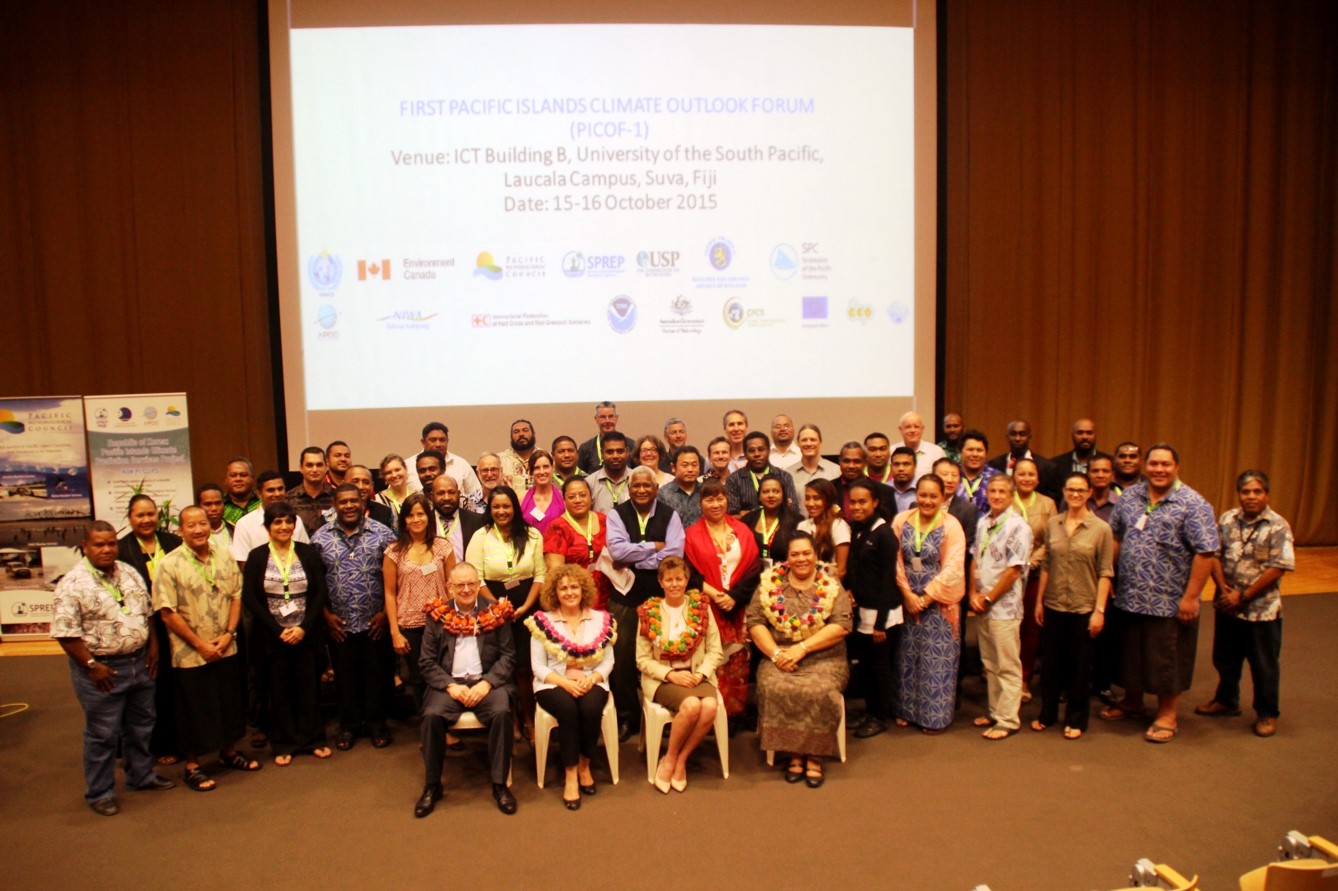
Objectives
The objectives of PICOF-1 were:
- to bring together national, regional and international experts on climate services and the water sector;
- to discuss seasonal climate outlook guidance for the Pacific Islands (PI) region (e.g. from SCOPIC, ICU, PEAC, and APCC);
- to discuss application of climate information to the water sector; and
- to co-explore common approaches and best practices for climate services that can be extended throughout the PI Region.
PICOF-1 comprised three days of 'pre-PICOF' technical presentations and discussion followed by two days of the PICOF, which included representatives from the Water Resources sector.
Consensus Regional Statement
Regional Statement on the El Niño and Potential Impacts for the Pacific Islands
A strong El Niño is currently in place with wide and varying impacts across the Pacific Islands region (see map, appended). El Niño will continue to have a significant influence on the climate and ocean in most parts of the Pacific Islands region for the remainder of 2015 and much of 2016.
El Niño Status and Outlook:
Tropical central and eastern Pacific sea surface temperatures have warmed significantly in recent months and are now at levels not seen since the 1997–98 El Niño event. Tropical cloudiness has shifted eastwards from the Indonesian region. The trade winds near the equator have been consistently weaker than normal. Sea level has decreased in the western Pacific, with increases in parts of the central Pacific.
El Niño is likely to be at its maximum strength towards the end of 2015, but will remain in place into the first half of 2016. Most El Niño events peak late in the year in which they develop and slowly degrade in the first half of the following year. As every El Niño is different it is possible the duration, maximum strength and degrading stages may be different to past events.
Some Potential Impacts:
Historically, El Niño has caused reduced rainfall in the southwest Pacific (from southern Papua New Guinea southeast to the southern Cook Islands) and enhanced rainfall in the central and eastern Pacific (e.g. Tuvalu, Kiribati, Tokelau and Nauru). Also, the number of tropical cyclones and their preferred tracks are usually affected by El Niño (see below). So, there is a risk of extreme rainfall events even where drier than normal conditions are forecast. El Niño events have also been associated with an increased risk of coral bleaching and changes in tuna catch. Note, impacts vary from event-to-event and across the region.
Typhoon/Tropical Cyclone Outlook:
The risk of a typhoon in the western and central north Pacific is above normal for the remainder of 2015. Most of these islands will have a high risk (1-in-3 chance) of serious effects from some combination of high winds, storm surges, large waves, and/or extreme rainfall associated with a typhoon.
In the southwest Pacific, tropical cyclone activity is expected to be above normal for the 2015–16 season. Tropical cyclone numbers are expected to be elevated for a majority of the Pacific Island countries close to or east of the International Date Line, and their tracks may be less predictable. Below average numbers are favoured in the Coral Sea region.
Rainfall and Drought:
Drier than normal conditions are already being experienced in parts of the southwest Pacific and north Pacific. These conditions are likely to continue for several months. It is likely that these locations will experience a prolonged drought in the year ahead. In contrast, above normal rainfall is likely to continue in the central equatorial Pacific.
Air and Sea Surface Temperature:
As island climates are strongly associated with the surrounding ocean temperatures the outlooks for these two variables are likely to be similar. Above normal air and sea surface temperatures are likely in the central and eastern equatorial Pacific. Below normal air and sea surface temperatures are likely in Micronesia and from Vanuatu southeast to the southern Cook Islands.
Sea Level:
Current sea level in the western tropical Pacific is below normal, and continued below normal to well below normal sea level is forecast for this region for several months. Low sea levels can result in severe coral bleaching events (see below). Central and eastern Pacific regions are forecast to continue to have normal to above normal sea levels, increasing the risk of coastal flooding from storms, very high tides and other phenomena.
Coral Bleaching:
For the fourth quarter of 2015, thermal stress-related bleaching is forecast to expand across the central Pacific. Localised bleaching associated with low sea level stands has been widely reported and is expected to continue at least through the end of the calendar year. The current bleaching event is likely to result in disease and death of corals through 2016 into early 2017.
Impacts on Drinking Water Supplies:
Maintaining access to safe drinking water and sanitation is already a daily challenge for many Pacific communities relying on small and fragile water resources. The unfolding El Niño event has the potential for significant water-related impacts for many communities across the region – with likely conditions varying according to location and local circumstances.
Across the Pacific, National Meteorological and Hydrological Services, Disaster Management Offices, water departments and civil society groups such as the Red Cross have been active in identifying water-related risks to urban and rural communities, and can assist in community preparedness and response activities. For communities with a history of water-related impacts associated with El Niño events, now is the time to prepare for and respond to potentially abnormally drier or wetter conditions (depending upon the typical impact) – at the household, village, island and national levels.
Gutter maintenance and water conservation can help ensure that every drop of rainfall is captured and used wisely. Even small reductions in daily water use can help maintain precious rain or groundwater reserves throughout periods of low rainfall. Maintaining good hygiene practices such as boiling drinking water and hand washing can help avert the worst health impacts of both above and below normal rainfall. Local drought and flood management plans can help clarify roles, keep track of developing conditions, and mobilise responses to those most in need.
Planning and preparation is key, as simple actions taken now can lessen impacts and help communities avoid or withstand the worst impacts of El Niño.
Sources of Information:
For more detailed information about the potential local impacts of this El Niño, please contact your National Meteorological and Hydrological Service, Disaster Management Office, water departments and civil society groups.
This statement was produced at the first Pacific Island Climate Outlook Forum (PICOF) held on the 12th to the 16th of October at the University of the South Pacific. The forum had a specific focus on the current El Niño, regional and national climate outlooks and impacts on the water sector. Representatives at the forum were from regional organisations, National Meteorological and Hydrological Services, national water sectors and UN organisations.
This statement is consistent with the Nuku'alofa Ministerial Declaration for Sustainable Weather and Climate Services for the Resilient Pacific, which recognised the importance of Meteorological and Hydrological Services in support of relevant national needs, including protection of life and property, sustainable development and safeguarding the environment.
The same noted that weather and climate services are not an option but are a responsibility and a basic human right.
